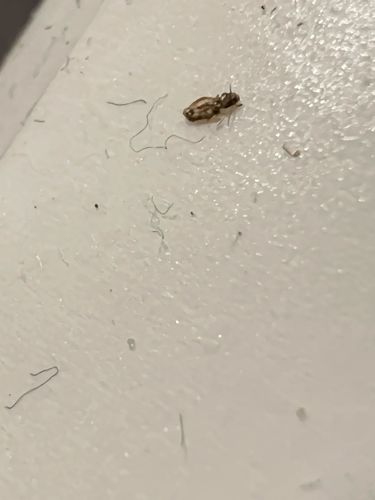Booklouse
Scientific Name: Psocoptera (various species)
Order & Family: Psocoptera (booklice, barklice), various families including Liposcelididae
Size: 1-2 mm in length

Natural Habitat
Damp, dark, and warm environments, often indoors in homes, libraries, and warehouses. They feed on microscopic mold, fungi, and starches found in old books, wallpaper glue, cereals, and other stored food products.
Diet & Feeding
Primarily feed on microscopic molds, fungi, starches, and other organic detritus. They do not bite humans or animals.
Behavior Patterns
Booklice thrive in high humidity (above 60-70%) and warm temperatures. They are usually found in quiet, undisturbed areas. They reproduce quickly under favorable conditions, often without mating (parthenogenesis). They are mostly harmless, though large infestations can contaminate food products or damage books/documents.
Risks & Benefits
Risks: Can be a nuisance in homes, libraries, and food storage areas. Large populations can contaminate food and damage paper products by consuming mold that grows on them, or the starch found in glues and bindings. They do not transmit diseases. Benefits: Considered part of the cleanup crew in nature, breaking down organic matter. Indoors, they indicate moisture issues in a building.
Identified on: 10/15/2025